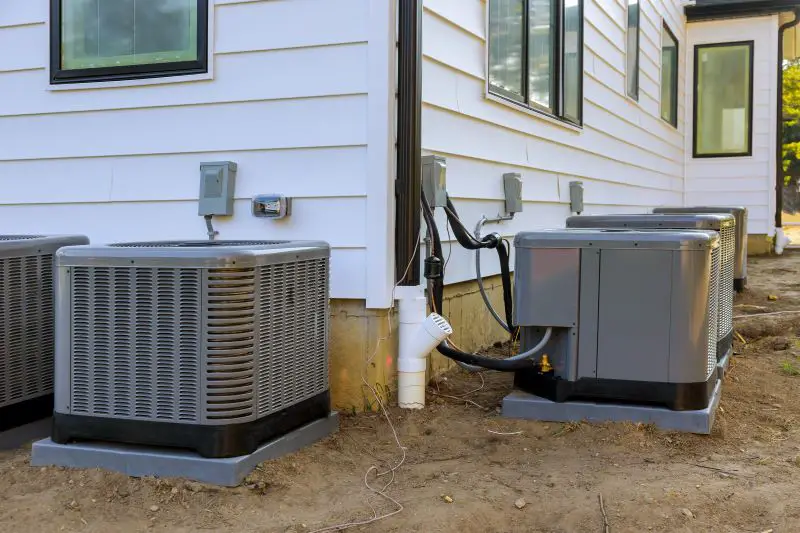Click here to get this post in PDF

In the realm of modern HVAC technology, the term “heat pump” has become increasingly prevalent. As energy efficiency and sustainability continue to dominate conversations around home heating and cooling solutions, understanding what a heat pump is and how it operates is crucial. In this comprehensive guide, we will delve into the mechanics behind heat pumps, exploring their functionality and benefits and specifically examining the performance of the Trane heat pump.
Understanding the Basics: What is a Heat Pump?
At its core, a heat pump is a device designed to transfer heat from one location to another. Unlike traditional heating and cooling systems that generate heat through combustion or electrical resistance, heat pumps leverage the principles of thermodynamics to move heat energy from one place to another. This allows them to provide both heating and cooling functions using a single unit, making them versatile and energy-efficient solutions for home comfort.
How Does a Heat Pump Work?
To grasp the operation of a heat pump, it’s essential to understand the basic components and the refrigeration cycle it employs. Most heat pumps consist of four primary components: an outdoor unit (the condenser), an indoor unit (the evaporator), a compressor, and a reversing valve. Together, these components work in harmony to facilitate the transfer of heat.
The process begins with the outdoor unit absorbing heat energy from the surrounding air through refrigerant contained within coils. Even in cold weather, there is heat energy present in the air, and the refrigerant within the coils absorbs this heat, causing it to evaporate into a low-pressure gas. The compressor then pumps this heated refrigerant gas to the indoor unit.
Within the indoor unit, the refrigerant is condensed back into a liquid state, releasing the absorbed heat into the indoor space. This warm air is then distributed throughout the home via ductwork or a ductless system, providing efficient heating during colder months. During warmer months, the process is reversed to provide cooling, with the heat pump extracting heat from inside the home and expelling it outdoors.
The reversing valve is a crucial component that enables this seamless transition between heating and cooling modes. By reversing the flow of refrigerant, the heat pump can alter its function based on the heating or cooling needs of the indoor space.
Advantages of Heat Pumps
Heat pumps offer several advantages over traditional heating and cooling systems, making them an increasingly popular choice among homeowners and commercial building owners.
1. Energy Efficiency: Heat pumps are highly energy-efficient, particularly in moderate climates. By transferring heat rather than generating it, they can deliver significant energy savings compared to systems that rely on combustion or electrical resistance.
2. Versatility: With the ability to provide both heating and cooling functions, heat pumps offer year-round comfort in a single unit, eliminating the need for separate heating and cooling systems.
3. Environmentally Friendly: Heat pumps produce fewer greenhouse gas emissions compared to fossil fuel-based heating systems, making them a more environmentally friendly choice for home heating and cooling.
4. Consistent Comfort: Heat pumps provide consistent and even heating and cooling throughout the home, eliminating hot and cold spots commonly associated with traditional HVAC systems.
5. Quiet Operation: Modern heat pumps, such as the Trane heat pump, are designed for quiet operation, ensuring minimal disruption to daily life.
Introducing the Trane Heat Pump
Trane is a renowned name in the HVAC industry, known for its commitment to quality, reliability, and innovation. The Trane heat pump exemplifies these qualities, offering homeowners efficient and dependable heating and cooling solutions.
Trane heat pumps are engineered with advanced features designed to optimize performance and maximize energy savings. Trane heat pumps are equipped to deliver superior comfort and performance in any climate, from high-efficiency compressors to variable-speed technology.
One notable feature of Trane heat pumps is their WeatherGuard™ II top, constructed from durable materials to withstand the elements and ensure long-lasting durability. Additionally, Trane heat pumps are rigorously tested to ensure they meet the highest standards of quality and reliability, providing homeowners with peace of mind knowing their comfort is in good hands.
Conclusion
In conclusion, a heat pump is a highly efficient and versatile HVAC solution that leverages the principles of thermodynamics to provide both heating and cooling functions. Heat pumps offer significant energy savings, consistent comfort, and environmental benefits by transferring heat energy from one location to another.
The Trane heat pump exemplifies excellence in HVAC technology, offering homeowners and commercial property owners a reliable and efficient heating and cooling solution. With advanced features and robust construction, Trane heat pumps are designed to deliver superior performance and long-lasting durability, ensuring year-round comfort.
Whether you’re looking to upgrade your existing HVAC system or explore options for a new home, consider the benefits of a heat pump and discover why the Trane heat pump stands out as a top choice for reliable comfort and energy efficiency.
You may also like: Key Points to Focus On When Repairing Air Conditioners
Image source: elements.envato.com
